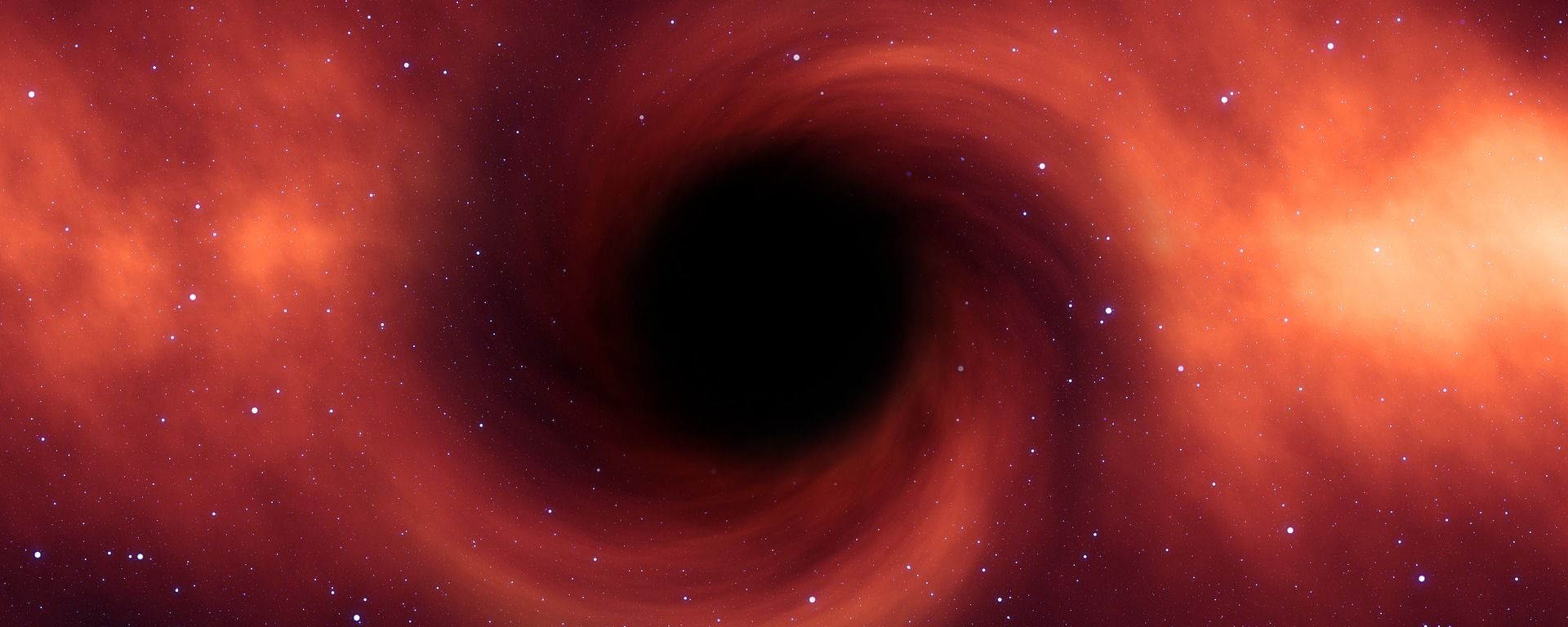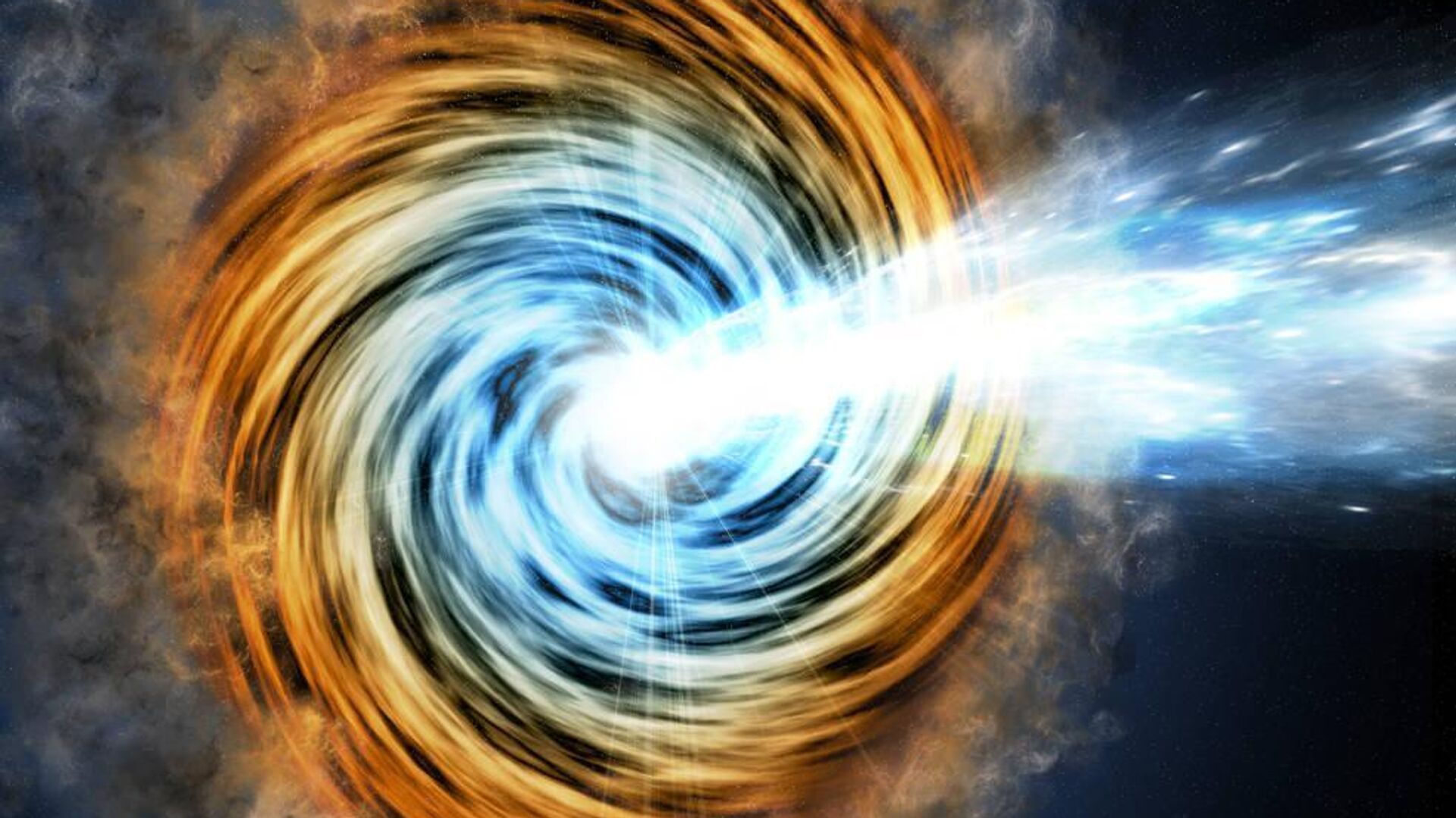https://sputnikglobe.com/20221124/riddle-of-high-speed-plasma-jets-shooting-from-galactic-nuclei-solved-by-astronomers-1104661203.html
Riddle of High-Speed Plasma Jets Shooting From Galactic Nuclei Solved by Astronomers
Riddle of High-Speed Plasma Jets Shooting From Galactic Nuclei Solved by Astronomers
Sputnik International
Researchers were able to determine how particles in plasma jets emitted by blazars “accelerated to such high energies." 24.11.2022, Sputnik International
2022-11-24T14:53+0000
2022-11-24T14:53+0000
2022-11-24T14:53+0000
science & tech
galaxy
supermassive black hole
plasma
particles
acceleration
https://cdn1.img.sputnikglobe.com/img/07e6/0b/18/1104661603_0:92:985:646_1920x0_80_0_0_0a66d6b770e46ab2e4d37de37007e3bd.jpg
A team of astronomers led by Ioannis Liodakis from the University of Turku has managed to gain new insight into the nature of blazars – active galactic nuclei that emit jets of magnetized plasma pointing nearly towards the observer.Using the Imaging X-ray Polarimetry Explorer (IXPE) – a space observatory that is a joint venture between NASA and the Italian Space Agency – Liodakis and his colleagues took a closer look at a blazar called Markarian 501 located over 300 million light years away.With the help of the IXPE, researchers managed to take a closer look at how particles in these plasma jets, which are “known to be ultimately powered by a supermassive black hole”, become “accelerated to such high energies."As one media outlet explained, originally there were two models explaining how a blazar accelerated particles: through shock waves, as Liodakis’ team suggests, or through interactions with the magnetic field of the supermassive black hole powering such a jet.While it was impossible to determine which model is correct, it appears that observations made via IXPE finally allowed scientists to obtain an answer to this question.
https://sputnikglobe.com/20221021/monster-black-hole-found-in-solar-systems-backyard-1102509123.html
Sputnik International
feedback@sputniknews.com
+74956456601
MIA „Rossiya Segodnya“
2022
News
en_EN
Sputnik International
feedback@sputniknews.com
+74956456601
MIA „Rossiya Segodnya“
Sputnik International
feedback@sputniknews.com
+74956456601
MIA „Rossiya Segodnya“
supermassive black hole, galactic nucleus, plasma jets, particle acceleration, scientific theory
supermassive black hole, galactic nucleus, plasma jets, particle acceleration, scientific theory
Riddle of High-Speed Plasma Jets Shooting From Galactic Nuclei Solved by Astronomers
Researchers were able to determine how particles in plasma jets emitted by blazars “accelerated to such high energies."
A team of astronomers led by Ioannis Liodakis from the University of Turku has managed to gain new insight into the nature of blazars – active galactic nuclei that emit jets of magnetized plasma pointing nearly towards the observer.
Using the Imaging X-ray Polarimetry Explorer (IXPE) – a space observatory that is a joint venture between NASA and the Italian Space Agency – Liodakis and his colleagues took a closer look at a blazar called Markarian 501 located over 300 million light years away.
With the help of the IXPE, researchers managed to take a closer look at how particles in these plasma jets, which are “known to be ultimately powered by a supermassive black hole”, become “accelerated to such high energies."
In their paper published in the Nature journal, the researchers say their findings point toward “a shock front as the source of particle acceleration” and suggest that “the plasma becomes increasingly turbulent with distance from the shock”.
As one media outlet explained, originally there were two models explaining how a blazar accelerated particles: through shock waves, as Liodakis’ team suggests, or through interactions with the magnetic field of the supermassive black hole powering such a jet.

21 October 2022, 16:09 GMT
While it was impossible to determine which model is correct, it appears that observations made via IXPE finally allowed scientists to obtain an answer to this question.


